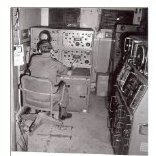-
Recently Browsing 0 members
- No registered users viewing this page.
Announcements
-
Topics
-
Latest posts...
-
0
158 dems vote against bill to deport illegals, who commit sex crimes
The bill passed ( The Violence against women by illegal aliens act) 260 to 158 The sponsor of the bill Rep Gop Nancy Mace said , we’re talking about illegal Immigrants who are here who are committing domestic violence ,rape and murder on woman & children-they’ve got to go. They shouldn’t be allowed into our country. https://www.foxnews.com/politics/dems-vote-against-bill-deport-illegal-immigrants-who-commit-sex-crimes -
2
Trumps Long Island Rally: Supporters sound off on life with Trump vs biden/harris
Why is the felon wasting money on a New York rally when he has zero chance of winning in New York? -
226
-
110
Pager Explosions in Lebanon Target Hezbollah Members 9 Dead Thousands Injured
This could be a possible intelligence activity coup as well. By knowing who was killed/injured by the exploding devices and working out who those people associate with, new, unknown participants of unknown hezbollah networks could be found out. Working out who was injured, who they associated with, who those people associated with, etc. For example, the iranian ambassador mojtaba amani was also injured by an exploding pager, a probable known participant in hezbollah planning. I am guessing that he had a pager so he could follow along with what those having been issued the pagers by the hezbollah government/military, were doing or planning. e.g. A page saying, Intell meeting at azar's house 7 pm. mojtaba amani would then attend the meeting and provide feedback to the iranian government/military about what kind of attack or activity hezbollah was planning against Israel. I used to do that kind of investigations when I was working. Knowing the target of an investigation, finding out who they worked for, who their friends were, where they traveled to, what activities they participated in, who else participated in those activities, etc. -
2
Trumps Long Island Rally: Supporters sound off on life with Trump vs biden/harris
A MAGA fan who believes B.S. conspiracy theories! How surprising! 😀- 1
-

-
4
What are the Thai names for these two Asian Ebony woods from Indonesia and Vietnam?
That's a bit obvious. I think he was looking for Thai words for different species of ebony. -
2,202
Thai gov. to tax (remitted) income from abroad for tax residents starting 2024 - Part II
There are DTAs where you can be tax resident in both countries. Things get very complicated then. -
27
Trump and Vance continue to lie about and demonise Haitians in Springfield
Joe Biden has good days and bad days. Most of the time, he's okay, as evidenced by his public appearances. Trump's public appearances indicate he is getting senile. -
52
PM Faces Pressure Over Thaksin's Alleged Hospital Fake-Out
It's not going to happen, is it? MFP has been dissolved. Pita's in the US. You're living in cloud cuckoo land. -
0
Wise removes Long Stay Reason on Transfers
I just processed a transfer via Wise and had to use personal expenses as the reason as they have removed the Long Stay in Thailand. It looks like there will be problems with some transfers showing as domestic not international. -
63
[QUIZ] 4 August - Brand Logo Pictures
I just completed this quiz. My Score 70/100 My Time 85 seconds -
53
[QUIZ] 4 August - Album Covers From The 1970s
I just completed this quiz. My Score 40/100 My Time 62 seconds -
22
/TV & FilmUS TV Sitcom Quiz: 1960-1980
I just completed this quiz. My Score 60/100 My Time 72 seconds -
5
Divorce, visa transition, lawyer and child parental rights
To @node and @john donson and @RedCardinal and @Campfire. i appreaciate all the advice of real world experiences and expectations. its been 9 months since my original post. i think the guys here (or anywhere) who have gone through this pretty much knows the journey one goes through. at this point, i'm ready to roll the dice and go to court to establish visitation rights now and request to get custody when my daughter is older. the abandonment date is looming and i'm counting down the days to go that route. i'm glad to hear the switch from marraige extension to retirement extension will be simple. but to be honest, i think everyone who has been here a while, knows nothing is "simple" 🤣. just kidding... -
121
Thailand issues four major announcements on new visa measures
You're right. Anyway - the visa is there for those who are worried about it.
-
.png.3b3332cc2256ad0edbc2fe9404feeef0.png)





.thumb.jpeg.435f0fb7221c5dd6500feca45095b936.jpeg)

Recommended Posts
Create an account or sign in to comment
You need to be a member in order to leave a comment
Create an account
Sign up for a new account in our community. It's easy!
Register a new accountSign in
Already have an account? Sign in here.
Sign In Now